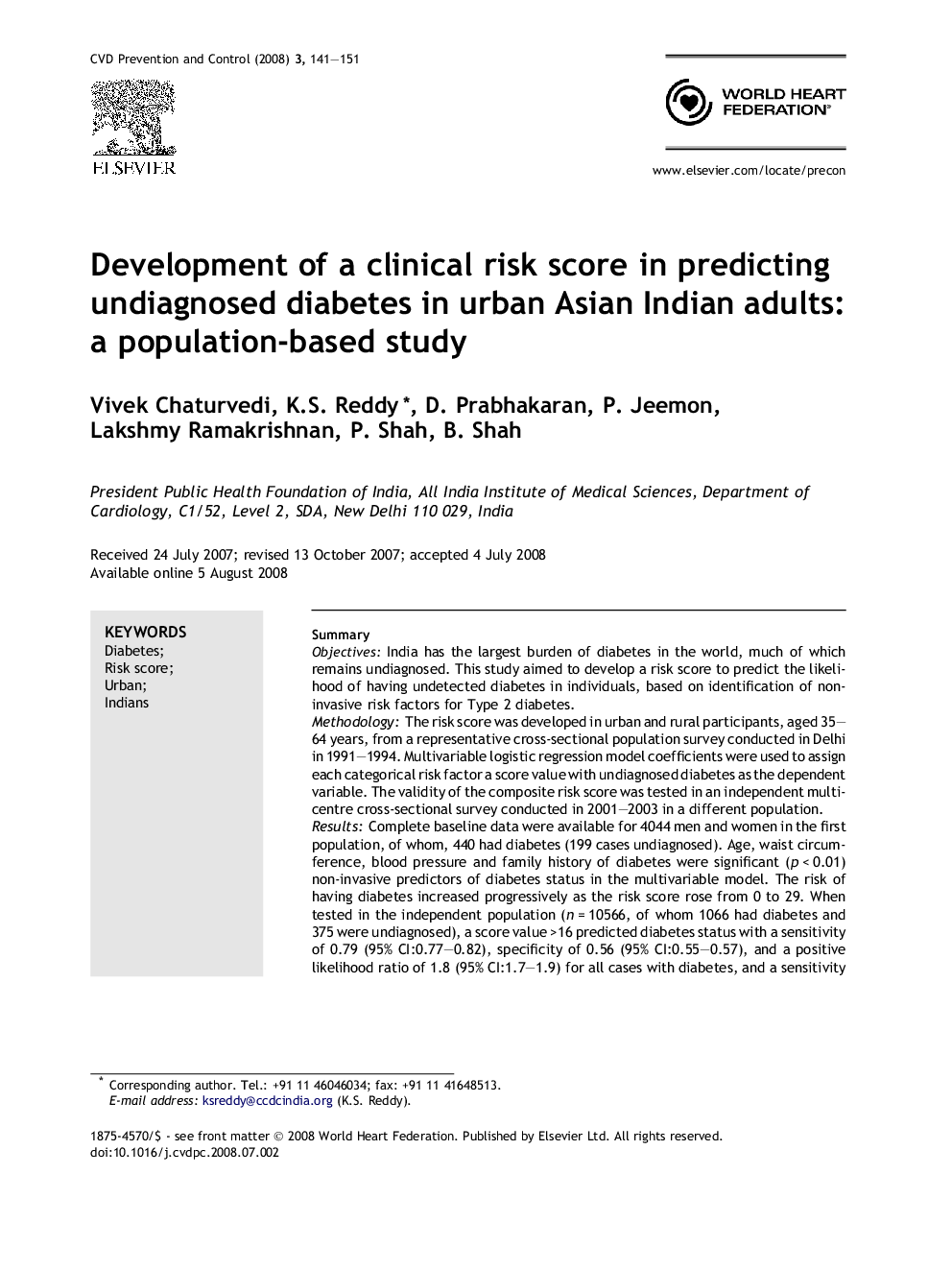| کد مقاله | کد نشریه | سال انتشار | مقاله انگلیسی | نسخه تمام متن |
|---|---|---|---|---|
| 2909755 | 1174585 | 2008 | 11 صفحه PDF | دانلود رایگان |

SummaryObjectivesIndia has the largest burden of diabetes in the world, much of which remains undiagnosed. This study aimed to develop a risk score to predict the likelihood of having undetected diabetes in individuals, based on identification of non-invasive risk factors for Type 2 diabetes.MethodologyThe risk score was developed in urban and rural participants, aged 35–64 years, from a representative cross-sectional population survey conducted in Delhi in 1991–1994. Multivariable logistic regression model coefficients were used to assign each categorical risk factor a score value with undiagnosed diabetes as the dependent variable. The validity of the composite risk score was tested in an independent multi-centre cross-sectional survey conducted in 2001–2003 in a different population.ResultsComplete baseline data were available for 4044 men and women in the first population, of whom, 440 had diabetes (199 cases undiagnosed). Age, waist circumference, blood pressure and family history of diabetes were significant (p < 0.01) non-invasive predictors of diabetes status in the multivariable model. The risk of having diabetes increased progressively as the risk score rose from 0 to 29. When tested in the independent population (n = 10566, of whom 1066 had diabetes and 375 were undiagnosed), a score value >16 predicted diabetes status with a sensitivity of 0.79 (95% CI:0.77–0.82), specificity of 0.56 (95% CI:0.55–0.57), and a positive likelihood ratio of 1.8 (95% CI:1.7–1.9) for all cases with diabetes, and a sensitivity of 73%, specificity of 56% and a positive likelihood ratio of 1.6 (95% CI: 1.5–1.7) for undiagnosed diabetes cases.ConclusionApplication of this risk score identified a substantial proportion of individuals with undiagnosed diabetes, using tools easily available in low-resource settings.
Journal: CVD Prevention and Control - Volume 3, Issue 3, September 2008, Pages 141–151